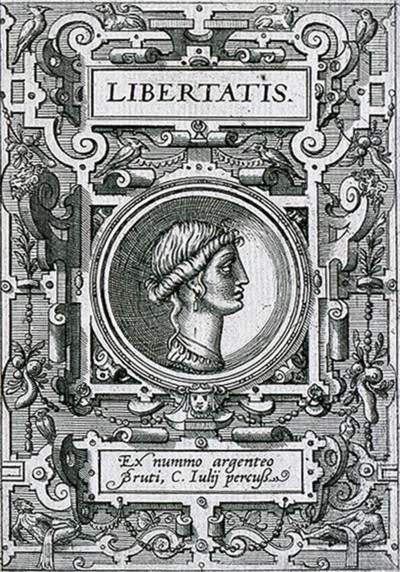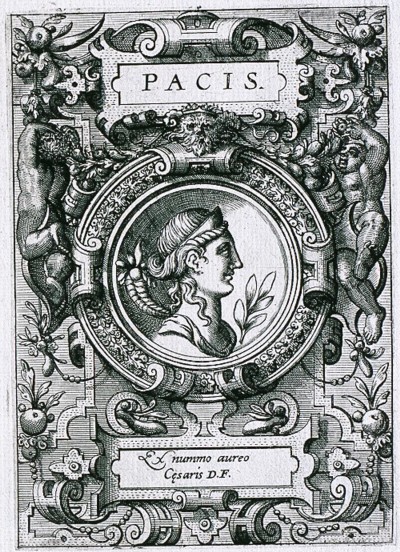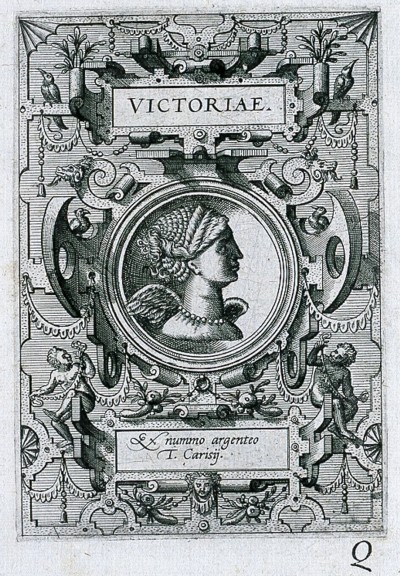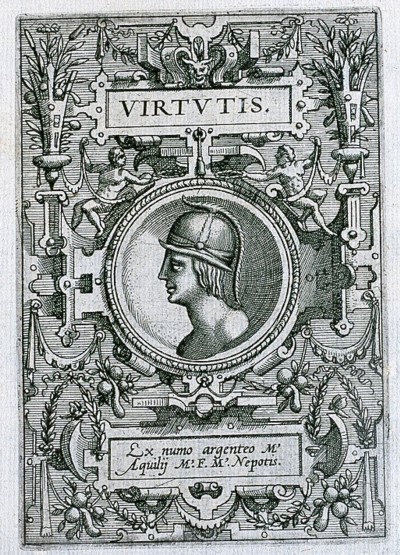Roman Virtues
These four depictions from a much larger collection of etchings, come from an illustrated work of ancient coins compiled by the famed cartographer and geographer of the Netherlands, Abraham Ortelius (1527-1598). They depict a number of late Roman virtues with an accompanying visage or head that was to depict the qualities or characteristics of the deity associated with that virtue. In these four examples, we are presented with the images of liberty (Libertas), peace (Pax), victory (Victoria) and manly virtue (Virtus). Over the etched image associated with each coin, Ortelius inscribed the genitive form, so for Libertas he inscribed Libertatis, or literally, "this head or visage of liberty." And so with each of the other subsequent examples portrayed here in order: Pacis (visage of peace), Victoriae (visage of victory), and Virtutis (visage of manly virtue). On ancient coins, either the noun or genitive form could appear (see here or here).
Ortelius is best known for his atlas of the continents, Theatrum Orbis Terrarum (1570) and his even more famous theory of their original connection and subsequent separation, but he was also an avid coin collector. In 1582 he compiled a folio of illustrations of the many coins he had assembled under the title Deorum dearumque capita or The Heads of Gods and Goddesses of which the four representations shown below are examples (see the original full text here). This compilation was then subsequently republished twice, first in 1602 (see here) and again in 1612, by the equally famous Belgian epigraphist and historian, Francois Sweerts (1567-1629). Sweerts very much admired Ortelius’ work but thought it should include commentary on the various entries, which he added in the Latin that was the scholarly language of the day. Sweerts thought that these depictions would shed important light on the ideas of liberty and the other important virtues as understood in classical times, part of the enduring leitmotif of an age often credited with the rebirth of European art and culture. It is not known to what extent the younger Sweerts may have worked directly with the more senior Ortelius in the completion of his work. Both resided in Antwerp.
 |
 |
 |
 |